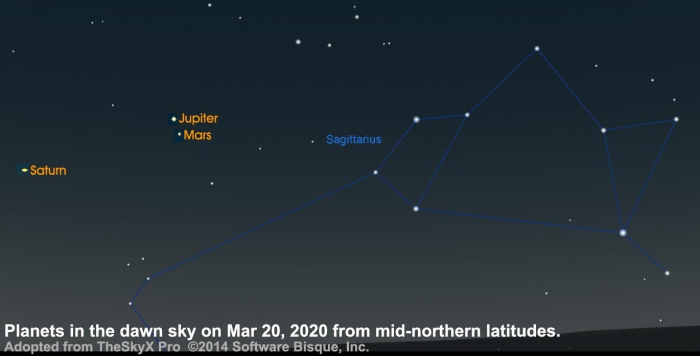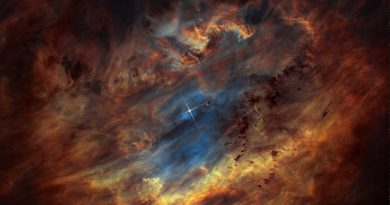Shelter in Space
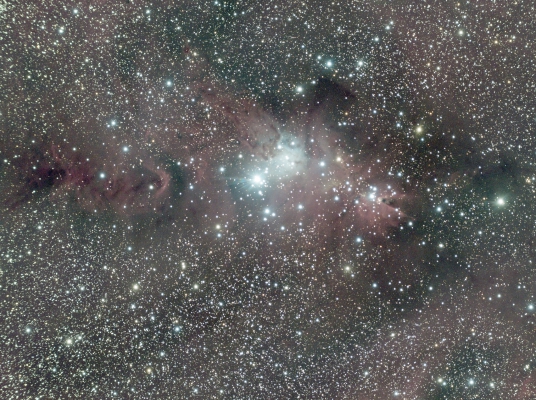
Christmas Tree Nebula at Amboy Crater by flickr user William Allen. All rights reserved. Used by permission. Astronomy in the time of Covid-19: Getting out in the desert for astrophotography is definitely sheltering in space. Taken at Amboy Crater on March 16, 2020.
Imaging details: Tele Vue-85 APO refractor with Tele Vue TRF-2008 0.8x Reducer/Flattener (converts TV-85 to 480mm f/5.6) imaging into ZWO ASI071 MC Pro Camera. Accessories: Tele Vue Starbeam Finder with Apertura illuminator, ZWO 30F4 Guides Scope with Starlight XPress Lodestar X2 Guide Camera. Mount: Celestron CGX EQ. Software: Celestron PWI, PHD2 Guiding, Astro Photography Tool 3.82.
Getting out in the desert for astrophotography is definitely sheltering in space.
Bill tells us how he started out in the hobby.
My father was interested in cameras and optics since he was a boy, and when I was a kid, he introduced me to looking at the stars through binoculars; this was how I did astronomy most of my life. In 2017, I had retired, and my wife and I went to see the total solar eclipse up in the Malheur National Forest in western Oregon. Almost as soon as we got back home, I ordered the 9¼” SCT and started viewing when it arrived a few days later. I discovered this thing called a “T-ring” for my Canon Rebel XTi, and shot some pictures of a quarter moon, and was kind of hooked. Later I went out into the deep desert for a dark sky and was blown away to see the Orion Nebula through an Ethos 17mm. I put the T-ring on the camera, stuck it into the Tele Vue diagonal, focused the camera, and took a few shots. That was what really hooked me.
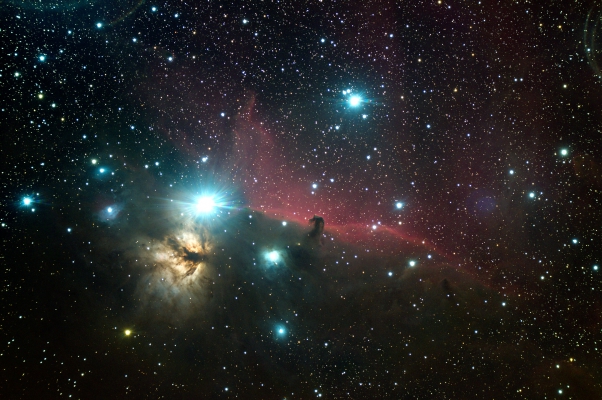
As Bill progressed in his imaging, he began using extension tubes and moved away from the DSLR to using dedicated astro-cameras.
you really have to connect to the natural world
He developed a philosophy that allowed him to continue to learn and appreciate his photo subjects.
Doing astrophotography and viewing is a lot like surfing: you really have to connect to the natural world, and you have to be patient for days that are rewarding.

Orion Nebula 2020-02-20 by flickr user William Allen. All rights reserved. Used by permission. The Orion Nebula has been a ‘goto’ target for me since I first shot it with an unmodified Canon Rebel XTi I got at Costco years ago. For one thing, it’s bright, so you can get a decent one-shot color image with just a couple of hours of subframes. The telescope, of course, has a lot to do with the detail, as does the mount and the rest of the hardware. Taken at Amboy Crater.
Imaging details: Tele Vue-85 APO refractor with Tele Vue TRF-2008 0.8x Reducer/Flattener (converts TV-85 to 480mm f/5.6) imaging into ZWO ASI071 MC Pro Camera. Accessories: Tele Vue Starbeam Finder with Apertura illuminator, ZWO 30F4 Guides Scope with Starlight XPress Lodestar X2 Guide Camera. Mount: Celestron CGX EQ. Software: Celestron PWI, PHD2 Guiding, Astro Photography Tool 3.82.
What led me to choose the Tele Vue-85 was that my first scope was a Celestron SCT, which was great for visual. I had purchased some Tele Vue Ethos eyepieces after reading the reviews, as well as the “oohs and aahs” at astro community sites. I liked the quality and finish, not to mention the performance of these optics. When I started taking pictures, the SCT was just too touchy, frustrating, and heavy for a beginner. I knew that if I wanted to get better results, I would have to go smaller. I eventually decided on a green Tele Vue-85 APO. I chose the Tele Vue TRF-2008 0.8x Reducer/Flattener and the Tele Vue Starbeam finder as additional accessories. After using the Tele Vue-85 and accessories for a year, my skill with other scopes, particularly the SCT, has improved greatly. The quality and resolution of the Tele Vue-85 is phenomenal. When aligning the mount, the Tele Vue-85 has such fine resolution that I can easily focus it sharply to resolve Polaris into two distinct stars. For other stars, the color transmission and clarity of the scope have really helped me to identify and locate objects during setup. Just these features alone have made the equipment worth the investment.
The Tele Vue equipment is really helping me understand what I need to do to get better photos, and my skills have improved, even with the big SCT.
Bill Allen is retired, has degrees in pure math, and is a member of the Los Angeles Astronomical Society.
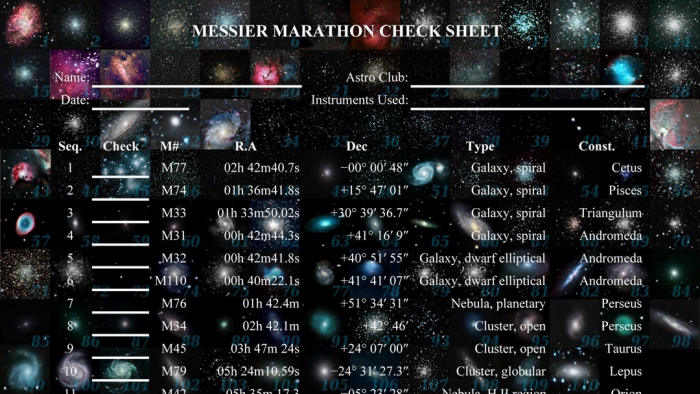
- Discover the Tele Vue-85 on our website (mobile version).
- Our 2″ to T-thread TRF-2008 Reducer/Flattener can clean up spherical aberration and reduce exposure times for any 400-600mm doublet refractor (mobile site).
- All you need to know about the Messier Marathon starting right now!


